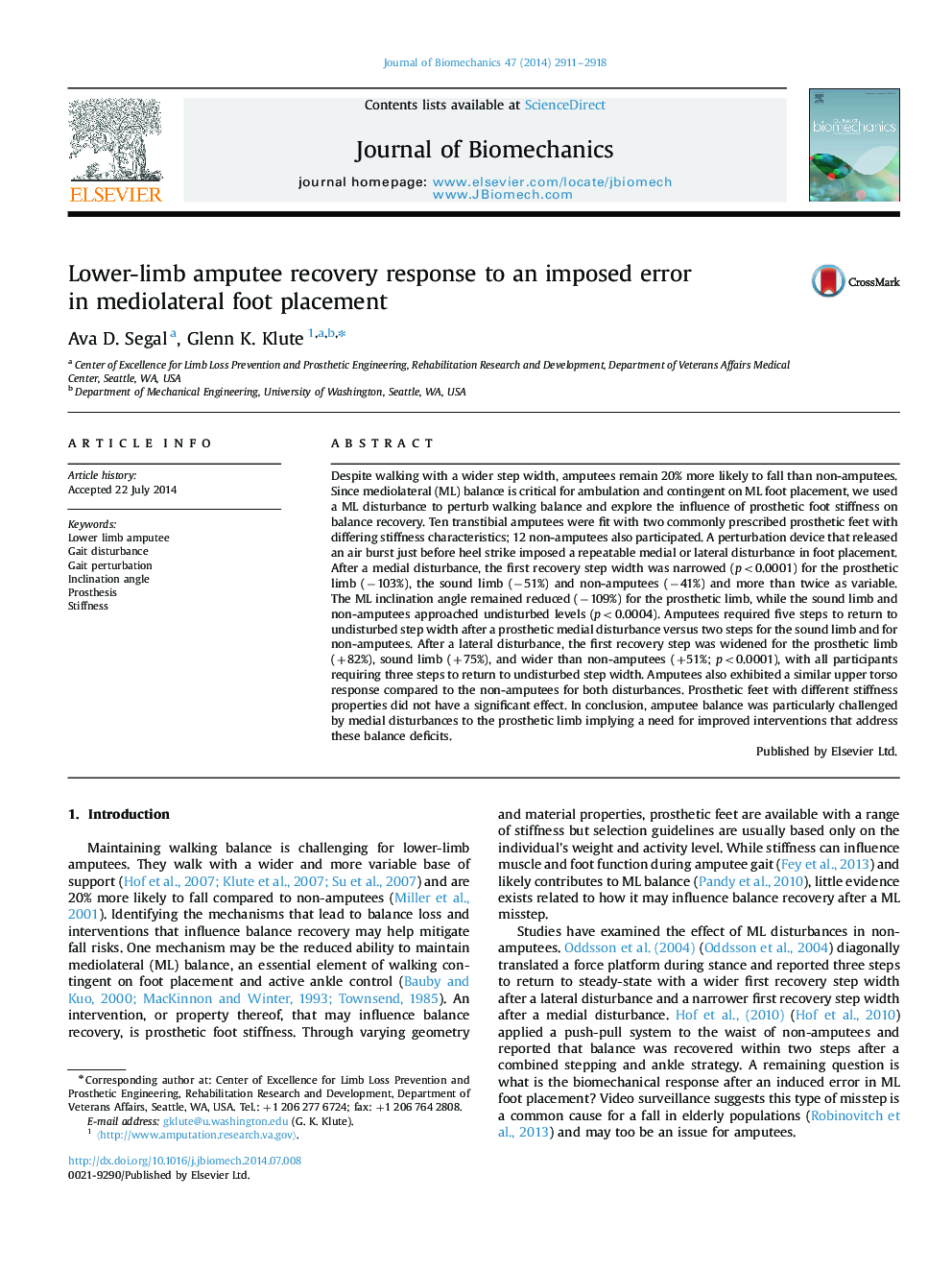| Article ID | Journal | Published Year | Pages | File Type |
|---|---|---|---|---|
| 10432101 | Journal of Biomechanics | 2014 | 8 Pages |
Abstract
Despite walking with a wider step width, amputees remain 20% more likely to fall than non-amputees. Since mediolateral (ML) balance is critical for ambulation and contingent on ML foot placement, we used a ML disturbance to perturb walking balance and explore the influence of prosthetic foot stiffness on balance recovery. Ten transtibial amputees were fit with two commonly prescribed prosthetic feet with differing stiffness characteristics; 12 non-amputees also participated. A perturbation device that released an air burst just before heel strike imposed a repeatable medial or lateral disturbance in foot placement. After a medial disturbance, the first recovery step width was narrowed (p<0.0001) for the prosthetic limb (â103%), the sound limb (â51%) and non-amputees (â41%) and more than twice as variable. The ML inclination angle remained reduced (â109%) for the prosthetic limb, while the sound limb and non-amputees approached undisturbed levels (p<0.0004). Amputees required five steps to return to undisturbed step width after a prosthetic medial disturbance versus two steps for the sound limb and for non-amputees. After a lateral disturbance, the first recovery step was widened for the prosthetic limb (+82%), sound limb (+75%), and wider than non-amputees (+51%; p<0.0001), with all participants requiring three steps to return to undisturbed step width. Amputees also exhibited a similar upper torso response compared to the non-amputees for both disturbances. Prosthetic feet with different stiffness properties did not have a significant effect. In conclusion, amputee balance was particularly challenged by medial disturbances to the prosthetic limb implying a need for improved interventions that address these balance deficits.
Related Topics
Physical Sciences and Engineering
Engineering
Biomedical Engineering
Authors
Ava D. Segal, Glenn K. Klute,
